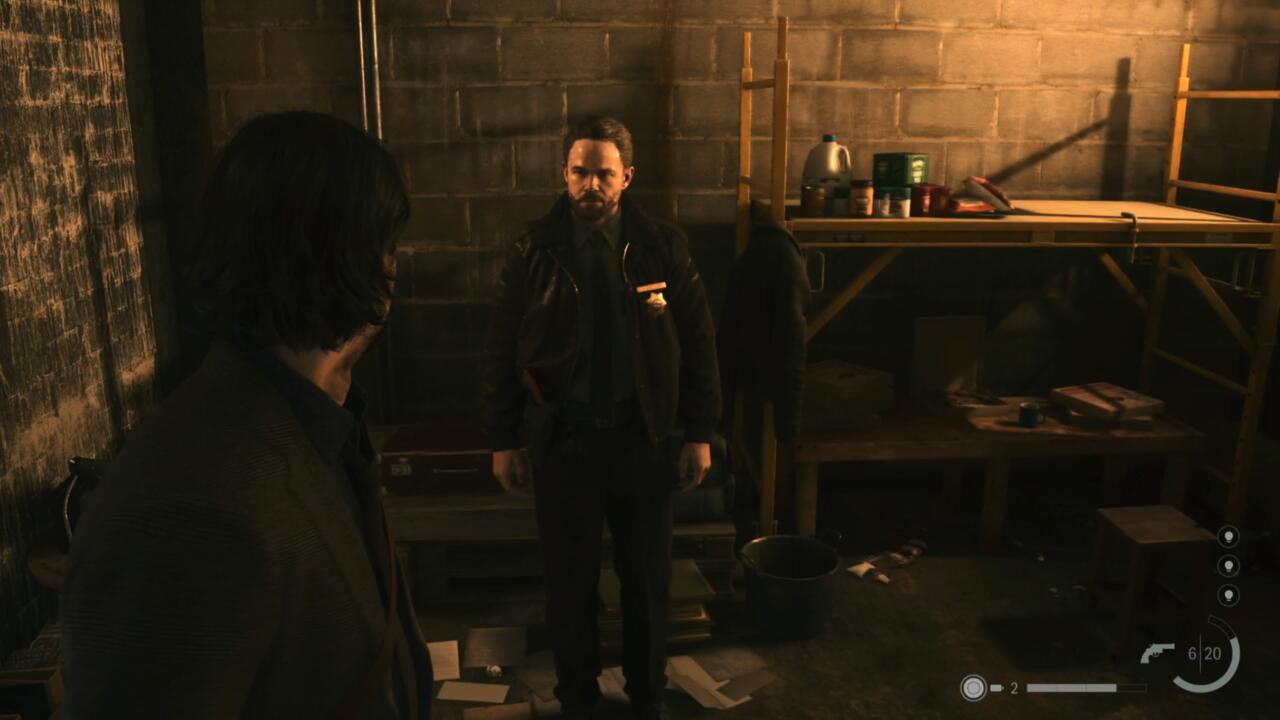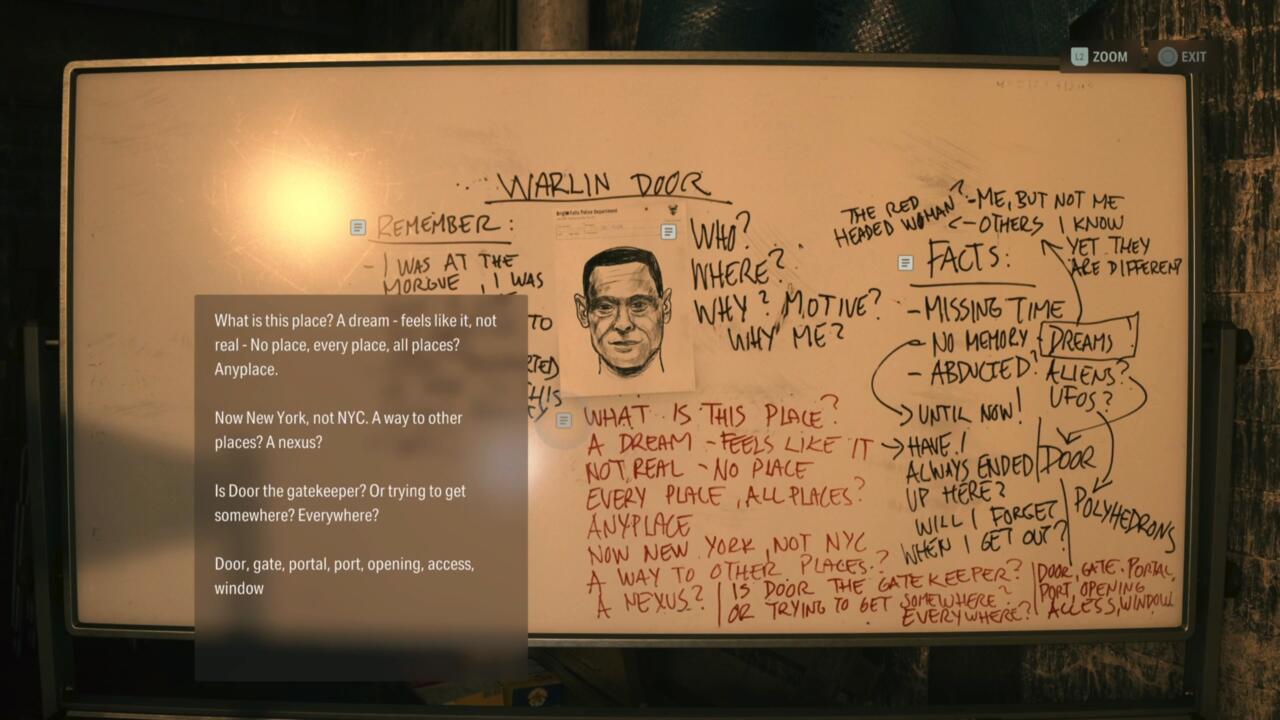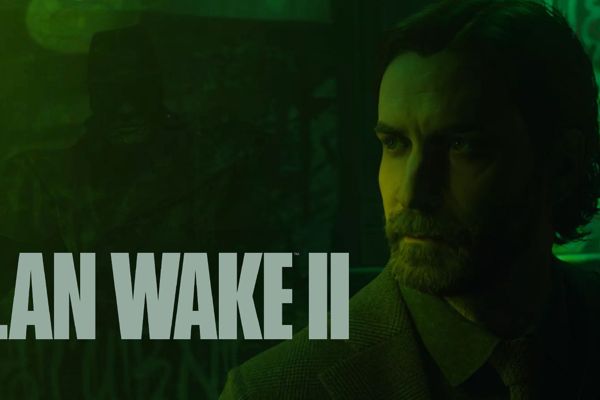
Remedy Reinvents the Multiverse as a Sinister Antagonist in Alan Wake 2

In Alan Wake 2, Remedy redefines the Multiverse concept, turning it into an ominous and formidable antagonist within the Remedy Connected Universe
Warning: This article contains minor spoilers for Alan Wake 2, as well as spoilers for Quantum Break and Control.
A quick search of "multiverse fatigue" will yield numerous articles, social media posts, and forum discussions where individuals express their dissatisfaction with the overuse of the concept of a "multiverse" in popular culture. The prevalence of superhero tales and their expansion into television has turned the once-niche, sci-fi notion of interconnected universes and alternate dimensions into a cliché, losing its novelty in the process.
Remedy Entertainment has recently released Alan Wake 2 in the midst of this climate. This marks the studio's second game since it introduced the concept of the "Remedy Connected Universe," which establishes a narrative connection between the Alan Wake games and Control, released in 2019. However, the Remedy Connected Universe goes beyond simply merging the worlds of Remedy's current and future games to create crossover events similar to TV shows.
Control explores the idea of a multiverse, treating it as something to be explored, studied, and protected against. The game also hints that Remedy's previous games could exist as additional dimensions within this multiverse.
If you were already irritated by the abundance of complex multi-story universes and perplexing multiverses, the release of Remedy's Alan Wake 2 might intensify your frustration. It takes the Easter eggs from Control and brings them to the forefront, making the connection between the two games much more apparent.
But Remedy's approach to the multiverse sets it apart from other media. Instead of exploiting popular characters or uniting fanbases, Remedy presents the multiverse as an oppressive force that engulfs these narratives. It spawns malevolent entities, corrupts and distorts individuals, and even ensnares them in nightmarish alternate realities. For Remedy, the multiverse is not simply a backdrop or a gimmick—it is the primary antagonist.
While Alan Wake himself struggles to escape a dark parallel dimension in all the Alan Wake games, there is another character who embodies the growing sense of the uncanny in Remedy's games: Warlin Door. Initially introduced through dialogue and notes in Control, Door takes on a prominent role in Alan Wake 2, serving as a source of comic relief during Alan's surreal journey through the reality-twisting alternate dimension known as the Dark Place. Door assumes the persona of a talk show host when first encountered, appearing more as a zany representation of the Dark Place's bizarre effects rather than a fully developed character.
The whole scenario takes a turn when you venture into the Dark Place and stumble upon another individual who appears to be trapped in Alan's nightmare. Sheriff Tim Breaker, a regular resident of Bright Falls, had previous encounters with the FBI Agent Saga Anderson at the start of the game. However, Tim abruptly disappeared in the midst of a conversation with Anderson. As you take on the role of Alan, you may encounter Tim, stranded in the Dark Place, desperately trying to find his way out.
Engaging in a conversation with Tim introduces a new layer of unease in Alan Wake 2. He shares his search for a mysterious entity known as Door, who Tim believes is responsible for his initial transportation into the Dark Place, although he remains uncertain of the motive. Tim also describes peculiar sensations he experiences, as if he has been in this place before but cannot recall the specifics. He mentions encountering people and phenomena in his dreams and a peculiar sense of familiarity with them, as if they belong to a different lifetime.
Tim appears to be referencing a connection between the time-travel game Quantum Break, another Remedy game. Actor Shawn Ashmore, who portrayed protagonist Jack Joyce in Quantum Break, plays the character Tim. Some of Tim's discussions and notes on the whiteboard, which he uses to track his memories and investigate the Door, seem to reference Jack's experiences in Quantum Break. He also mentions a familiar feeling towards a red-haired woman he keeps encountering. In Quantum Break, Jack collaborates with Beth Wilder, a red-haired woman portrayed by Courtney Hope, who also plays protagonist Jesse Faden in Control. Interestingly, even Tim's name, Tim Breaker, bears a resemblance to "time breaker," which describes Jack Joyce in Quantum Break.
The implications of Alan Wake 2 being tied to Quantum Break are not as important as examining how the concept of the multiverse is impacting the characters in the story. Tim is not just a mere traveler through the multiverse; he is deeply affected by it. He has been attacked by an unknown force, distinct from the Dark Presence that Alan is fighting. The multiverse is encroaching upon Tim, infiltrating his dreams and distorting his perception. He has lost control over his very existence, the fundamental aspects of his identity, without any understanding of the cause.
Later on, Alan has a revealing conversation with Door where the truth is unveiled. Door confesses that while they were content to be a part of Alan's narrative and aid him, Alan's actions in the Dark Place have the potential to disrupt Door's plans.
Control provides additional context regarding Door. In his dreams, Dylan, the brother of the protagonist Jesse Faden, mentions encountering a character referred to as "Mr. Door." In these dreams, Mr. Door explains the concept of the multiverse to Dylan, stating that he exists in all worlds and constantly shifts between them. From Dylan's description, it does not appear that Door is a malevolent entity as he deliberately refrains from assisting in the spread of the Hiss, an antagonistic force similar to Control's Dark Presence, to other dimensions. However, it is evident that there is more to Door than what we currently understand.
It is important to mention that even Quantum Break features a character with potentially villainous tendencies. Towards the end, this character seems to manipulate events in order to aid Jack, but with their own ulterior motives. The name of this character is Martin Hatch, and when compared side by side, Warlin Door appears oddly reminiscent of a distorted version of his name, akin to Wario. Naturally, it is worth noting that Remedy does not possess the rights to Quantum Break, thus leaving these connections up to interpretation.
However, the significance lies not in the connections themselves, but the way in which Remedy utilizes them to transcend mere fan service. Alan Wake 2 and Control not only broaden the scope of their respective storylines, but also establish a link between them, with various forces and motives intersecting. The enigmatic character Warlin Door raises questions about his identity and intentions. Similarly, the mysterious janitor Ahti, who appears in both Alan Wake 2 and Control, serves as a helper to the protagonists.
Furthermore, the narrative of Alan Wake 2 delves into a sinister alternate dimension and the emergence of a formidable entity. The Dark Place and the Dark Presence are entities that should not exist in Alan's world, yet they invade, reshaping the very fabric of reality.
Remedy goes beyond simply creating a chilling narrative in Alan Wake 2 - it plants the seeds of an expanding cosmic horror tale that permeates all its games. Unseen but ever-present, there are incomprehensible forces at play within these realms, relentlessly pursuing their objectives. They corrupt, manipulate, and ultimately end the lives of those unfortunate enough to cross their paths. Engaged in a struggle that surpasses human understanding, they are enigmatic beyond imagination.
Within the Remedy Connected Universe (RCU), the multiverse consists not of parallel dimensions but rather a collection of self-contained spheres colliding, blending, overlapping, and consuming one another. The convergence of these intertwined tales is more than mere character interactions - it has the potential to drive them to the brink of insanity. In the RCU, the very fabric of the universe can infiltrate one's thoughts, invading and reshaping their very essence, forcing them to question their own identity.
For an improved approach to multiverse stories, Remedy offers a compelling idea. Rather than merely incorporating the concept of a multiverse into your stories, make it a formidable force to be reckoned with. In Alan Wake 2, the multiverse itself becomes a source of terror, elevating the RCU from a collection of interconnected games into something far more profound.
Editor's P/S
As an enthusiastic fan of Remedy Entertainment's games, I am thrilled to see the studio's unique take on the multiverse in Alan Wake 2. The idea of the multiverse as a malevolent antagonist is a refreshing change from the typical portrayal of parallel universes as benign or even beneficial. Remedy's approach adds a sense of danger and unpredictability to the story, making it all the more compelling.
I also appreciate the way Remedy has connected the various games in its Remedy Connected Universe. The Easter eggs and references to previous games add depth and richness to the world-building, rewarding fans who have played the earlier titles. At the same time, the games are still accessible to newcomers, who can enjoy them without having played the others.
Overall, I believe Remedy's reinvention of the multiverse in Alan Wake 2 is a bold and exciting move that sets the stage for even more compelling storytelling in the Remedy Connected Universe. I can't wait to see what the studio does next.
















